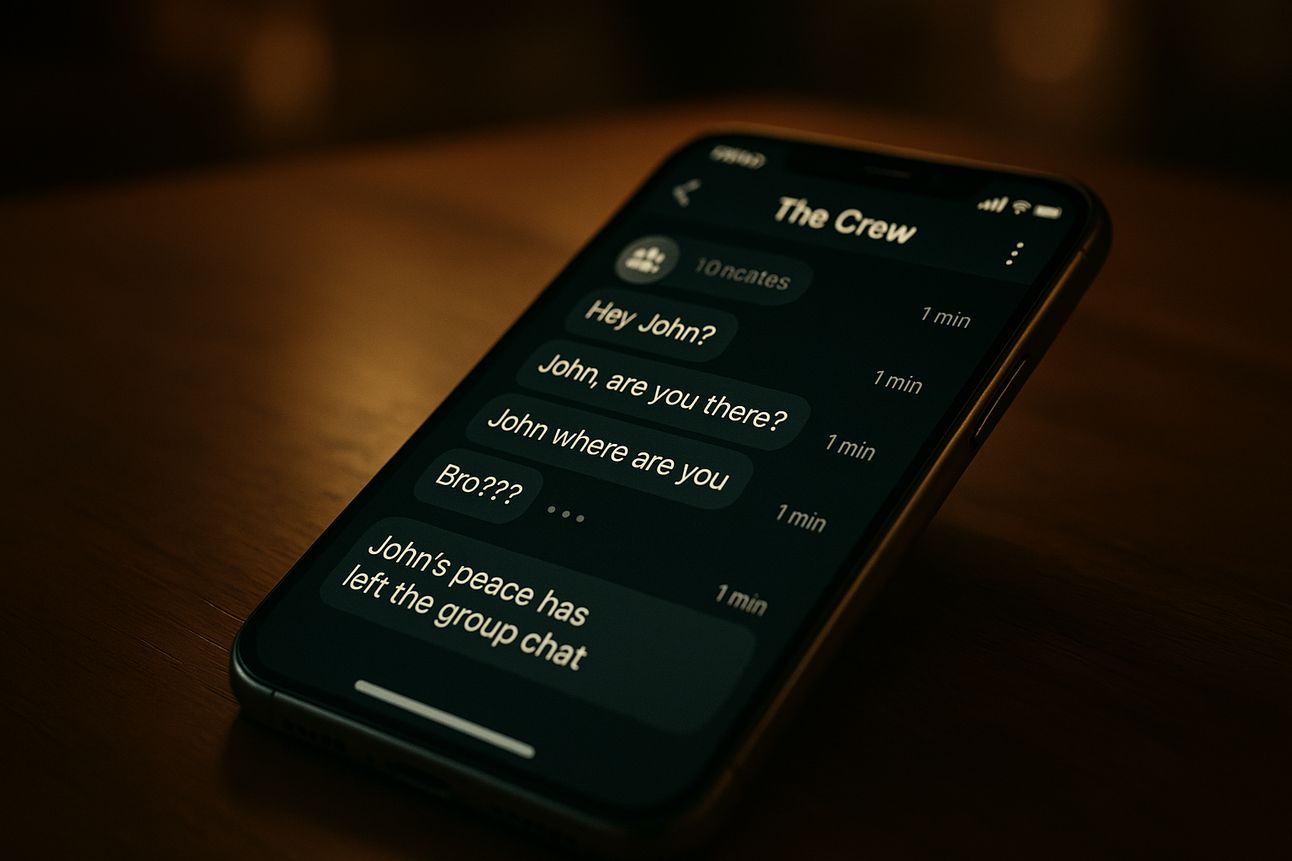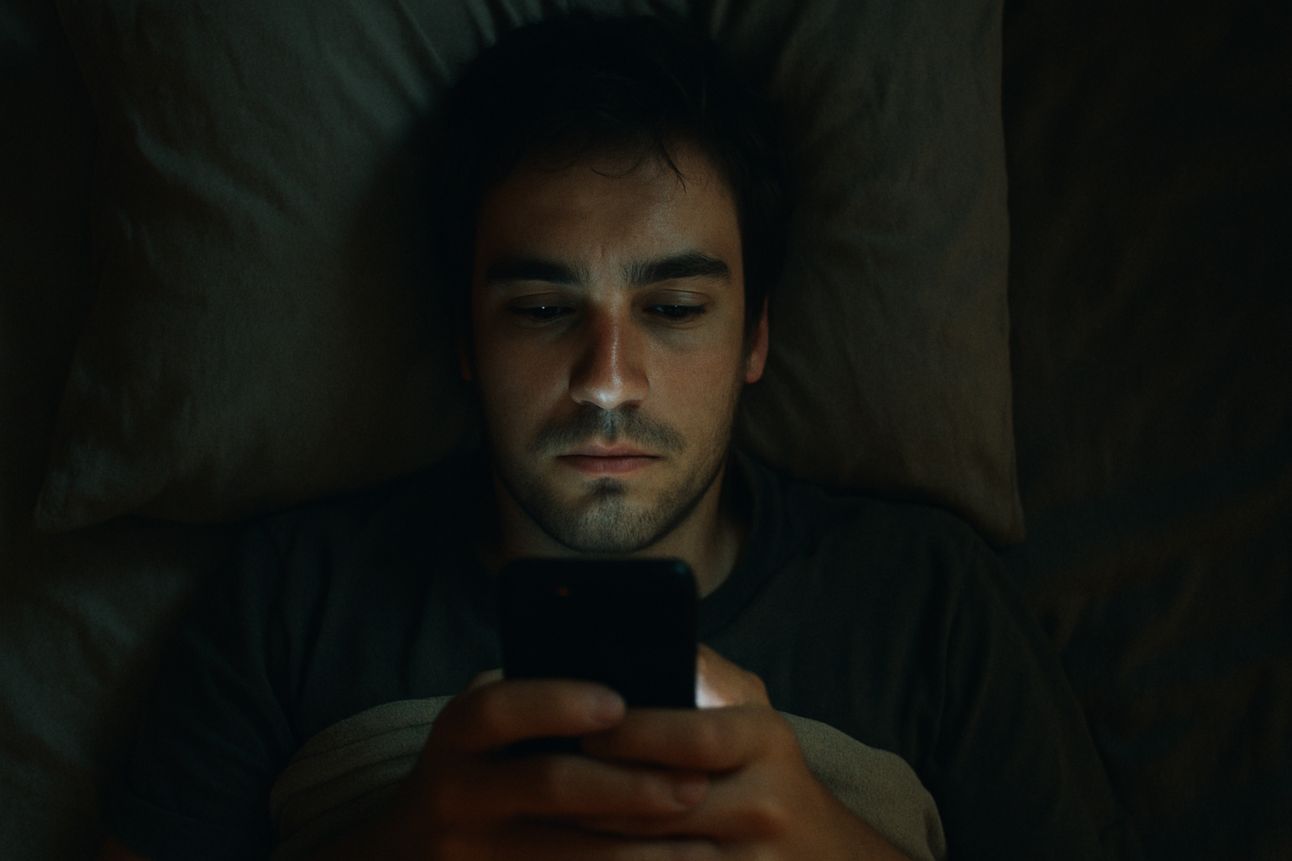You wake up. The first thing you do—before brushing your teeth, before even fully opening your eyes—is reach for your phone. Notifications from work, family, and friends flicker in. Messages, emails, updates, a flood of content waiting to fill your brain before you’ve even gotten out of bed.
By the time you’re in the kitchen, you’ve already absorbed a headline that left you unsettled, a post that made you feel behind, and a highlight reel that makes your real life seem impossibly quiet.
You’re not alone in this. Millions of people start their day the same way. Scrolling. Consuming. Absorbing other people’s opinions, energy, and emotions before they’ve had a chance to check in with their own. What we call “connection” often arrives as a distraction.
You leave the house with a mind full of fragments. Not ideas, not intentions—fragments. A meme here. A celebrity feud there. Some breaking news that may or may not be true. It’s not that any one thing is overwhelming. It’s that everything is present at once. And it’s all asking for your attention.
By noon, your brain is exhausted, but you haven’t done anything that felt meaningful. By night, you’ve watched content, answered messages, scanned headlines, and laughed at a few things you forgot five minutes later—and still, somehow, you fell behind. Not just behind on work or goals. Behind on yourself.
What’s left of your own attention is scattered. You can’t focus. You forget what you opened your phone to do. You stop mid-sentence in conversation. You’re always “on,” but rarely present. You’re full of information and somehow starving for peace.
This is the feeling you can’t name. Not quite anxiety. Not quite depression. A slow erosion of presence. A quiet hollowing out of clarity. A life packed with input—but empty of rest.
You’re not alone. You’re just online.

A World That Won’t Let You Breathe
The average person now consumes more than 74 gigabytes of information a day—enough to overload a laptop by the end of the week. But none of this feels extraordinary because it’s been normalized. You check your phone 96 times a day. You spend nearly seven hours on screens. And you don’t think twice because everyone else is doing the same thing.
This isn’t happening by accident. The technologies surrounding us weren’t just built for convenience. They were engineered for engagement. Social platforms, media outlets, app ecosystems—they all run on a single metric: time. The more of yours they capture, the more valuable they become.
So, they optimize for addiction. They reward outrage. They push content that’s emotionally charged, polarizing, and impossible to ignore. Algorithms are tuned not to inform but to hold your gaze. And the longer you stay, the less aware you are of what you’re giving up.
The result is a world where you’re never quite offline but never fully present. A world where your attention is divided, your peace is interrupted, and your mind is constantly asked to process more than it was ever meant to hold. All of this happens under the banner of productivity, innovation, and progress.
But what it really produces is friction. Not just in our own heads, but in our relationships. Communication becomes clipped. Empathy thins. We respond before we reflect. We react before we relate. And beneath all of it, we begin to feel isolated—even when we’re constantly connected.
Social media doesn’t just pull you in. It teaches you to compare. To perform. To reduce complex parts of your identity into digestible pieces for others to evaluate. The feedback is instant, but the internal residue lingers. Especially for younger generations who have never known a world without this constant loop of judgment and visibility.
The pressure to curate a self, to keep up with narratives, to stay informed, to not fall behind—it never stops. And it’s not just on your phone. It’s in your inbox, your Slack messages, your group chats, your news feed, your smart home, your wearable. The boundaries between person and platform have blurred. And it’s making it harder to breathe.
We’re not just overstimulated. We’re outmatched.
The systems built to capture our attention hold more resources, access more data, extend further reach, and carry greater incentive to keep us tethered than we have to break free. Over time, living in such a world leads you to believe distraction is your fault. Feeling overwhelmed begins to seem like a personal flaw. Burnout gets framed as a failure of productivity.
It’s not. It’s the architecture.
What It’s Costing You—Quietly

When you live inside architecture designed for distraction, you begin to mistake stimulation for substance. You start to believe that being busy is the same as being fulfilled, that being informed is the same as being grounded, and that being connected is the same as being close.
But they’re not. And the gap between what we consume and what we actually need is growing wider by the day.
We scroll while we eat, while we walk, while we rest, while we try to fall asleep. We fill every crack of silence with something—anything—because to be disconnected now feels unnatural. But all that consumption doesn’t make us feel full. It makes us feel hollow. Let me tell you a story about what's called the “Deer Effect”.
You’ve probably never seen a deer starve to death with a full belly. But it happens.

In harsh winters across the North, whitetail deer survive by eating bark, dead leaves, and woody twigs—far from ideal, but their bodies are adapted to it. Their stomach, houses millions of microorganisms specifically tuned to digest that rough forage. It’s not glamorous, but it works. It’s how deer have survived for thousands of years.
Then comes the mistake: someone dumps a pile of corn, hay, apples, or grain, dumped into the snow. The deer rush in and gorges themselves.

But their stomachs can’t digest it. The microbial ecosystem inside them isn’t built for it. And so, they begin to die—quietly, invisibly—while their bellies remain full.

Even if they survive the overload, their ability to process their natural diet is disrupted. They can’t go back to the twigs and bark. Their system’s been thrown off course.
This is not rare. It’s an observable truth in biology. It happens to deer. To horses. To sheep. To elephants. And now, it’s happening to us.
Only our corn isn’t corn. It’s content.

It’s scrollable noise, endlessly available, engineered to feel urgent and satisfying. But it leaves us mentally bloated, emotionally depleted, and less capable of processing the deeper, slower forms of nourishment—silence, rest, boredom, thought, and presence.
We don’t know how to sit with ourselves anymore.
Because our inputs have changed our internal wiring.
The result isn’t just a distraction. It’s disorientation. We consume media that satisfies our cravings but not our core. We click, watch, skim, like—and still feel restless. We’re full of content we can’t digest. Overfed, undernourished, and too exhausted to notice.
We’ve lost our ability to pace.
We’ve disrupted the feedback loop between what we allow in and what we actually need.
And just like the deer, we don’t feel it right away.
But over time, it costs us everything.
Power Down to Reclaim Power
Most people don’t realize how much of their life they’ve surrendered until the silence finally returns.
Not the kind of silence that shows up between pings. The kind that forces you to feel where your mind has been living—and for how long.
That’s when it hits: you weren’t really choosing. You were reacting. Existing in a loop of automatic input. Scrolling past your own exhaustion. Dismissing the fog as normal.
And in this system, that’s not an accident. It’s design.
Power, now, isn’t about domination or disruption. It’s about pacing. About deciding what holds your attention. About protecting what shapes your thoughts. About choosing what gets your emotional labor before it claims it by default.
This isn’t about unplugging forever. It’s about noticing how deeply you’ve been programmed. Not because you’re careless—but because the system is relentless.
Reclaiming clarity means rewriting your relationship with media. With technology. With yourself. It means tuning your inputs. Noticing which content drains and which restores. Following creators who nourish. Turning down the noise that confuses urgency with value.
But it also means not doing it alone.
That’s why we’re building CoCreate Media.
Not as another platform to fill your time but as a system that helps you become intentional about your own signal—what you value, what you want more of, and what makes you better. We help you identify what kind of content actually supports your mental, emotional, and relational health. We connect you with creators who aren’t just performing—but offering something that fills you back up.
And we give brands a way to support that system—not interrupt it. When demand comes from real people, not just click patterns, the result is content that actually serves. That elevates. That reflects the life you’re trying to build—not the distraction you’re trying to escape.
You don’t need more content.
You need a better connection.
To yourself. To others. To your potential.
Because when you become a better consumer—more intentional, more conscious, more present—you don’t just transform your screen. You transform your space. Your relationships. Your community. You reflect that awareness into the system around you.
Powering down isn’t the end.
It’s the beginning of a different kind of attention.
And a different kind of world.
Reclaiming Your Peace in a Loud World
The solution isn’t to log off forever. The problem was never just your screen time. The problem is that we’ve been participating in systems that don’t reflect who we want to be. Systems that reward reaction over reflection, volume over value, and consumption over presence.
But what happens when the system begins to reflect the user?
Imagine your content environment as a space you shape, not just a place you go to escape. Picture your data transformed into restorative experiences aligned with your goals, pace, needs, and capacity—a space where content helps you feel, discover, and experience more life.
That's what we're building at CoCreate.
Not another platform for content—but a system built to help you name what matters. We help you identify the kinds of experiences that actually nourish. We create a structure where your preferences, your timing, and your boundaries aren’t just respected—but recognized as valuable. You participate in the media environment not as a passive scroll but as an active signal of what kind of world you want to live in.
We connect you with co-creators who contribute to that world. We invite brands to support that alignment. We create feedback loops that don’t just amplify the loudest voice but the most needed one. Because when content meets real demand—and when demand is connected to human potential—you stop being part of the problem and start becoming part of the solution.
There’s no algorithm that can replace presence. No AI that can recreate emotional clarity. No stream of videos that can substitute for the experience of being with yourself.
But we can design toward it.
We can create media that feels like returning to your center, not running from it.
And we don’t have to do it alone.
Peace isn’t a detox. It’s a different design. A different world.
And, its one we will CoCreate together.

